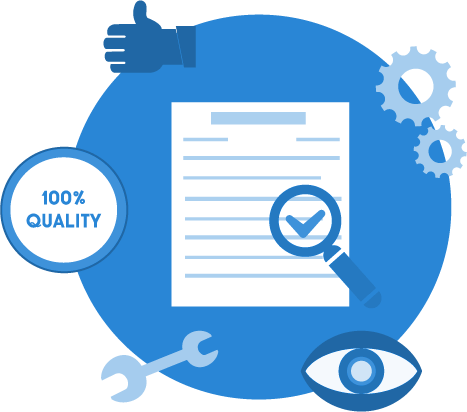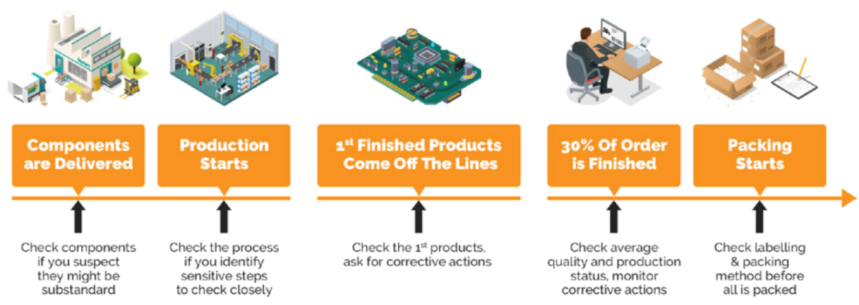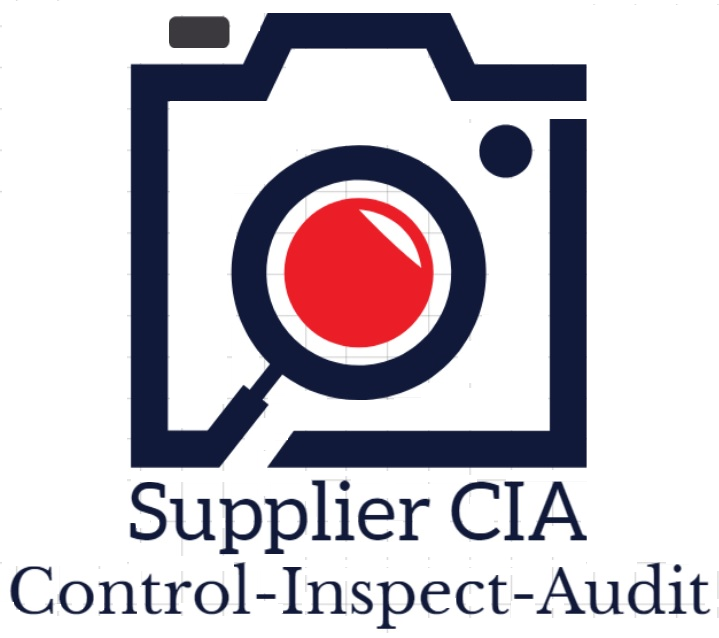 Importers’ greatest manufacturing challenge; “Quality Defects”
Importers’ greatest manufacturing challenge; “Quality Defects”
When asked what is their greatest manufacturing challenge, 62 percent of all importers (528 out of 852 respondents) answered with “managing product quality”.
Relatively serious quality defects; not acceptable quality defects, unacceptable quantities, leading to shipping delays, dissatisfied customers, product returns, and in some cases, legal repercussions and product recalls.
1-Preventing Defects Before Production Begins
“Production processes involved, parts & materials used and the skill & experience level of factory staff are the primary determinants of the quality level of finished goods.”
The best time to begin preventing defects is during the sourcing process.
-
Be upfront with potential suppliers about your order volume: Customers might say that their first order will be small, but subsequent orders will be larger and frequent.
-
Don’t bargain too hard with suppliers on price: A customer demands a lower price for goods, the supplier is usually forced to make cuts elsewhere to recoup the difference, typically at the expense of the quality of parts and materials used in manufacturing.
-
Vetting potential suppliers by auditing their facilities by Factory Audit
-
Establishing an approved product sample to set the quality standard: An approved sample, sometimes called a “golden” sample, is a factory’s attempt to manufacture a product that closely fits your requirements and specifications.
-
Reviewing and testing product samples
-
Establish two identical approved samples: the inspector still has a valid sample to follow in case the one at the factory isn’t available or has been tampered with.
-
Sign and date both samples
-
Seal each sample in its own carton for shipping
-
Explicitly stating your quality expectations in a QC checklist
-
Product requirements
-
Packaging requirements
-
On-site tests and checks
-
Defect classification
-
Working with your supplier and inspection team to develop and maintain your checklist: Collaborate with both parties when developing a QC checklist for your product, and do it early, well before mass production begins.
-
Other documents that serve to clarify your quality expectations: Most POs contain a lot of the same basic information, such as item numbers, quantities, pricing, and payment terms. the requirement for pre-shipment inspection. Some importers require their supplier to pay a financial penalty for each defect of a certain type found in the finished goods.
A vendor agreement tends to be a much longer document than a typical PO. It often contains product quality requirements and procedures, as well as standards for social compliance.
2- Identifying Any Defects That Appear In Production
The inspection offers different insights when carried out at different times. And while inspection most often occurs when the product is finished and packaged, it’s often necessary for importers to inspect at other times as well.
A- When to do Quality Inspection?

1- Pre-Production Inspection: Inspecting the raw materials and parts your supplier plans to use in your product before manufacturing begins (to ensure they meet specifications and quality standards) or the first unit—or a unit from the first lot—that comes off the line before mass production starts.
2- During Production Inspection: Product Inspection performed when 20-30% of your production is completed and some of them packed for shipping to check packing according to buyers requirements.
3- Final Quality Inspection (Pre-shipment Inspection): More than 80 % of the goods are finished and packaged.
4- Container Loading Inspection: Focused on reporting how the cartons are loaded and in what quantities than on the quality of the products themselves.
 Note: When to inspect your order is entirely up to you and your supplier. Most importers will receive the greatest benefit from conducting DUPRO and final inspection. But your product type, past experience with your supplier, and QC budget will likely be the key deciding factors for which timing is best for you.
Note: When to inspect your order is entirely up to you and your supplier. Most importers will receive the greatest benefit from conducting DUPRO and final inspection. But your product type, past experience with your supplier, and QC budget will likely be the key deciding factors for which timing is best for you.
The “tough” way: a focus on final inspections performed rigidly. Find the right balance between helping and arm-twisting
The “easy” way: Do tailored inspections in different time throughout the production process
B- Which method should be used in Quality Inspection?
SupplierCIA offer to its’ clients two main Quality Inspection Model:
1- Sample Control: Our inspector selects from the whole quantity of your order a sampling lot, a small number of products that will be controlled visually and functionally. The result of that small quantity of finished products should represent the overall quality of your whole order according to the international AQL quality control method MIL-STD-105E / ISO 2859-1.
2- Full Inspection: the control of each and every piece of your order at your Turkish supplier factory before shipment. It is mostly performed at the end of the production.
3- Addressing Defects Found And Preventing Their Recurrence
Corrective action through product rework
Product defects or nonconformances that are correctable, importers typically turn to their supplier to rework or repair some or all of the affected units before shipping the order. Product rework can be an effective such as; untrimmed threads on a garment, glue residue on a sneaker and missing hangtags on a pair of sunglasses
 Certain types of defects that are either difficult to mend through product rework or simply aren’t worth the time or risk of damaging the product. A minor defect, such as a press mark left on a promotional hand towel. Excess material on an injection-molded item, a defect known as flash may be worth removing if deemed serious enough. Always weigh the costs and risks against the benefits of trying to mend quality issues before asking your supplier to rework a product.
Certain types of defects that are either difficult to mend through product rework or simply aren’t worth the time or risk of damaging the product. A minor defect, such as a press mark left on a promotional hand towel. Excess material on an injection-molded item, a defect known as flash may be worth removing if deemed serious enough. Always weigh the costs and risks against the benefits of trying to mend quality issues before asking your supplier to rework a product.
There are also defects and other issues that are impossible to address through product rework, use of the wrong logo on an item, or unacceptable fabric density in home textile.
Destroying unsellable goods: Product defects or other issues that can’t be fixed and render their product unsellable.
-
To protect their brand from the substandard products. Destroying a shoddy product with your branding at the factory is often the best way to ensure it doesn’t end up being sold.
-
To prevent competitors from buying and selling their inventory, it’s best to have a qualified inspector or other trusted third-party present during destruction to verify that workers destroy all the goods in full.

